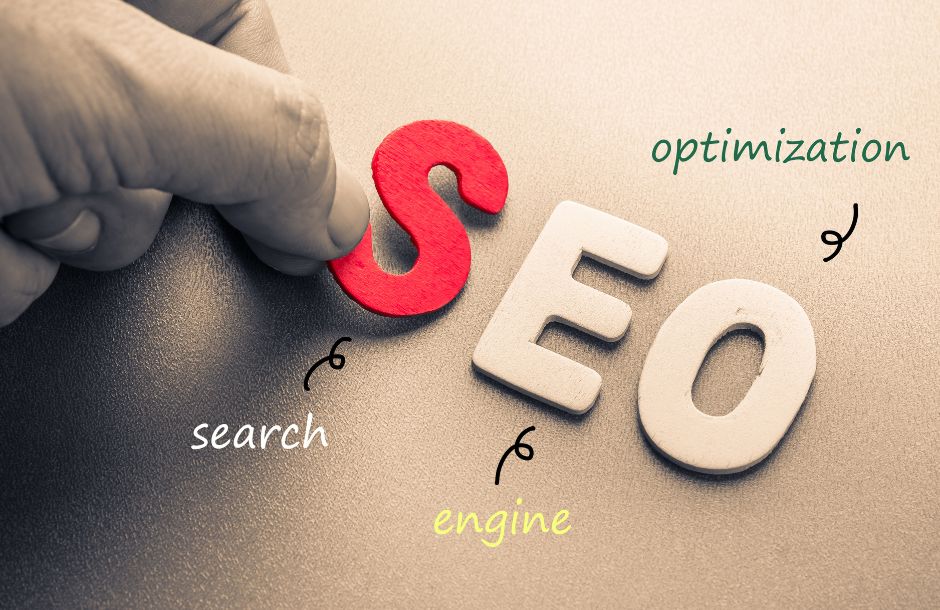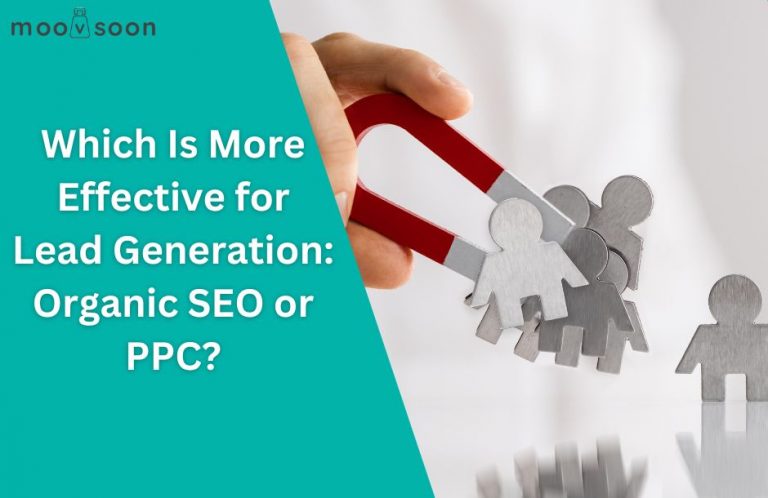
How Can You Balance SEO With Quality Content Effectively?
In the fast-paced world of digital marketing, creating content that is both engaging and optimized for search engines is crucial for success. How can you effectively blend creativity with strategy to boost your brand’s visibility? Understanding the harmony between SEO practices and compelling storytelling is key to driving results.
Over the years, content marketing has evolved significantly. Businesses now focus on aligning their content with audience needs and search intent, leading to better organic traffic. Trends show that interactive content, such as polls and videos, is on the rise, fostering deeper audience engagement.
To enhance your content, ensure clarity and coherence while using simple language. Avoid jargon and keep sentences concise to maintain readability. By crafting narratives that captivate and encourage interaction, you can build a loyal community around your brand. How do these strategies impact your digital presence? Embracing them can lead to lasting engagement and growth.

Why is understanding your target audience crucial for content creation?
Understanding your target audience is vital for content creation because it guarantees the material resonates with the right people, enhancing engagement and achieving goals. Knowing the audience allows creators to tailor their message, tone, and style to meet the specific needs and preferences of their intended readers. This alignment improves the likelihood of capturing attention and inspiring action, whether it’s clicking a link, sharing content, or making a purchase.
For instance, a content strategy focused on millennials would lean towards digital platforms and use concise, visually appealing formats, while content for senior audiences might prioritize clarity and accessibility.
Additionally, understanding audience demographics, interests, and pain points enables creators to address topics that matter most to them, increasing the relevance and value of the content. Fundamentally, a deep understanding of the target audience is the foundation for effective content that not only attracts but also retains and converts readers.
How does keyword research enhance content relevance?
Why is keyword research crucial for enhancing content relevance? It plays a vital role in connecting content with what users seek. Below are key aspects of keyword research:
- Identifying user intent: Understanding the reasons behind searches helps create content that answers specific questions, ensuring relevance.
- Optimizing SEO performance: Proper keyword integration improves search engine rankings, making it easier for users to find your content.
- Driving targeted traffic: Effective keywords attract the right audience, increasing the chances of engagement and conversions.
- Content organization: Keywords help structure your content logically, making it more user-friendly and accessible.
Keyword research is essential for creating valuable content that resonates with users and improves visibility online.
What tools assist in identifying effective keywords?
Keyword research is essential for content relevance, as it guarantees your content aligns with user queries and search intent. Tools like Google Keyword Planner, SEMrush, and Ahrefs help identify effective keywords by analyzing search volume, competition, and related terms.
These tools enhance content by providing insights into popular and trending keywords, enabling you to tailor your content to what users are actively searching for. This alignment increases visibility and engagement, as content that addresses specific queries is more likely to rank higher in search results, attracting more organic traffic.
How does keyword placement impact SEO performance?
What are the key factors influencing effective keyword placement for SEO? Here is a concise list of important elements:
- Keyword Density: The right amount of keyword use signals relevance. Aim for a natural frequency that enhances content flow without making it feel forced or awkward for readers.
- Title and Headings: Using keywords in titles and headings helps search engines quickly understand your content’s topic, making it easier for users to find relevant information.
- Introduction: Place keywords within the first 100 words of your content. This early placement reinforces the main topic and improves visibility in search results.
- Meta Descriptions: Incorporating keywords in meta descriptions can increase click-through rates by clearly indicating what the page is about to potential visitors.
- Image Alt Text: Including keywords in image alt text makes your content more accessible and helps search engines index your images effectively.
Effective keyword placement is essential for optimizing content visibility, enhancing user experience, and driving organic traffic to your site.
Why is maintaining content readability important for user engagement?
Maintaining content readability is essential for user engagement because it directly influences how users interact with and comprehend the information presented. Readable content guarantees that users can quickly grasp the main ideas, facilitating a smooth and enjoyable reading experience. This accessibility fosters increased interaction, as users are more likely to stay on the page, explore additional content, and even share valuable insights with others.
Moreover, readable content contributes to a positive user experience by accommodating diverse audiences, including those with varying levels of literacy and expertise. This inclusivity broadens the reach of the content, appealing to a wider audience base. Additionally, search engines favor content that exhibits high readability, as it aligns with user-centric criteria, potentially enhancing the page’s visibility and ranking.
Ultimately, prioritizing readability enhances user satisfaction and engagement, creating a cycle of positive interactions and content sharing, which benefits both the audience and the content creator.
How do short paragraphs and bullet points improve readability?
Short paragraphs and bullet points greatly enhance readability by breaking down complex information into easily digestible chunks. This format allows readers to quickly scan and comprehend key points without feeling overwhelmed.
Maintaining content readability is essential for user engagement as it keeps readers interested and encourages them to stay longer on the page. When users find content easy to navigate and understand, they are more likely to interact with it, share it, and return for more, thereby increasing overall engagement and retention rates.
Why should jargon be avoided in general audience content?
Why should jargon be avoided in general audience content? Jargon should be avoided because it creates confusion and alienation among readers, which can decrease engagement. When content includes complex terms, 70% of users may leave the page in search of simpler information, leading to higher bounce rates.
Clear, jargon-free content improves readability, which is essential for keeping readers interested. Research indicates that 80% of users prefer straightforward language, making them more likely to stay on a site longer and share the content. This behavior positively impacts search engine rankings, as it signals valuable content to search engines.
User-centric content without unnecessary jargon leads to better retention and satisfaction. A 2022 study showed that audiences are 60% more likely to engage with content that is clear and simple. Prioritizing jargon avoidance will enhance audience engagement and overall content performance, ensuring your message reaches a wider audience effectively.
How does incorporating internal and external links benefit SEO?
Incorporating internal links on your website can enhance site navigation, improving user experience and helping search engines index content effectively. These links can lead to a 50% increase in page views, according to a 2021 study by HubSpot.
Moreover, linking to authoritative external sources enhances your site’s credibility. A study from Moz in 2022 found that websites with external links to high-quality sources rank 20% higher in search engine results. By strategically utilizing both internal and external links, you can boost engagement metrics, leading to improved SEO performance overall.
What role do internal links play in site navigation?
How do internal links improve site navigation? The table below outlines the key benefits of using internal links for enhancing user experience and SEO performance.
| Aspect | Benefits of Internal Links |
|---|---|
| User Engagement | Keeps visitors engaged by guiding them to related content. |
| Bounce Rate Reduction | Lowers bounce rates by encouraging exploration of more pages. |
| Time on Site | Increases time spent on site, indicating content relevance. |
| Link Equity Distribution | Shares link equity across pages, boosting visibility of important content. |
| Search Engine Signals | Improves site structure, signaling value to search engines. |
| Data Insights | Allows tracking of user behavior for refining link strategies. |
Understanding the benefits of internal links is vital for improving website navigation. By effectively using internal links, you create a more engaging experience for users and enhance your site’s SEO performance, leading to better search rankings.
How can external links to authoritative sources enhance credibility?
Incorporating external links to authoritative sources can notably enhance the credibility of your content. These links act as endorsements, showing readers that your information is supported by trusted experts or institutions. This practice not only strengthens your argument but also boosts search engine optimization (SEO).
Using both internal and external links in your content benefits SEO by improving site navigation and increasing user engagement. Internal links guide users to related content on your site, enhancing the user experience and helping search engines understand your site’s structure. External links, particularly to authoritative sites, signal to search engines that your content is well-researched and credible, potentially improving your rankings.
Why is regular content updating necessary for sustained SEO success?
Regular content updating is essential for sustained SEO success because search engines prioritize fresh and relevant content. Regular updates signal to search engines that a website is active, improving its chances of ranking higher. This process involves adding new information, optimizing keywords, and ensuring the content reflects current trends and user needs.
In addition, updated content can increase user engagement by providing the latest insights or solutions, which can lead to higher click-through rates and lower bounce rates. Businesses that frequently refresh their content often see improved organic traffic and visibility, maintaining a competitive edge in search engine rankings.
How does updating old content with new information affect rankings?
Updating old content with new information is important for improving search rankings. Here are five key reasons why this practice matters:
- Freshness Signals Authority: Search engines favor fresh content, viewing it as more relevant and trustworthy, which can enhance your site’s authority.
- Improves User Experience: By providing updated information, you meet user needs for current insights, making your content more valuable.
- Boosts Click-Through Rates: Relevant, up-to-date content can attract more clicks, increasing your site’s visibility in search results.
- Enhances SEO Performance: Regular updates positively influence overall SEO, helping your site rank higher in search engine results.
- Identifies Trends: Updating allows you to incorporate new trends, keeping your content aligned with audience interests.
What is the impact of content freshness on user trust?
How does content freshness impact user trust? Fresh content significantly increases user trust, as 57% of users consider up-to-date information essential for reliability, according to a 2021 survey by HubSpot. Regular updates signal to users that your website is relevant and current.
When users observe a consistent update frequency, they associate your brand with reliability. This perception is crucial since 75% of users prefer engaging with sites that provide the latest insights. Enhanced user trust leads to increased site visits and return traffic, which are vital for conversions.
Moreover, updated content positions your site as an authority in your field. By consistently providing current information, you not only meet user expectations but exceed them, fostering loyalty. Building this foundation of trust is essential for long-term user satisfaction. Therefore, maintaining content freshness is crucial for balancing SEO needs and establishing genuine user trust.
Conclusion
Striking the perfect balance between SEO and quality content is crucial for online success. A thoughtful content strategy should prioritize search engine optimization while ensuring genuine engagement with your audience. Focusing on content that ranks well and resonates with readers is essential.
Understanding your audience’s needs is vital. Craft content that effectively answers their questions and provides solutions to their problems. By merging SEO with audience relevance, you can enhance your site’s search rankings while cultivating a loyal readership.
Ongoing analysis of your website’s performance is necessary for sustained success. Utilize analytics tools to track organic traffic, bounce rates, and dwell time to identify strengths and weaknesses. This data will help refine your content strategy, ensuring it meets both SEO standards and audience expectations.
Keeping your content fresh is equally important. Regular updates enhance user trust and improve search visibility, which ultimately benefits your brand. The key to balancing SEO and quality content lies in constant evaluation and adaptation to meet both search engine requirements and audience interests.
Are you ready to create content that attracts visitors and keeps them engaged? Start implementing these strategies today for long-term success.



